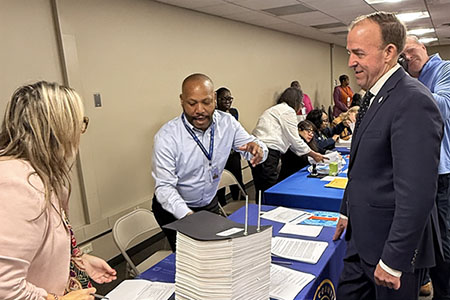
Until about three months ago, experts said it was unthinkable that interest rates would ever fall below the previous record low of 3.31 percent. But then the coronavirus happened.
Jun. 1, 2020 – The Mortgageland interest rate roller coaster has plummeted to a historic record low of 3.15 percent nationwide, the lowest ever recorded by Freddie Mac’s Primary Mortgage Market Survey, which dates back to 1971. Sparked by worldwide investor panic fueled by the spread of the coronavirus, average benchmark 30-year fixed-rate mortgages fell to 3.15 percent on May 28 from 3.24 percent a week earlier. A year ago, the 30-year fixed loans averaged 3.99 percent.  This means Chicago home buyers and families seeking to refinance now have a once-in-a-lifetime opportunity to lock in the lowest mortgage interest rate in nearly five decades. On May 28, Mutual of Omaha was quoting a rock bottom 3.125 percent, reported RateSeeker. Under an aggressive loan program involving pledged money market funds, Huntington Bank was quoting 2.325 percent on a seven-year jumbo adjustable rate mortgage with 30 percent down payment, according to mortgage broker Brian Bockholdt. When the average 30-year fixed-rate mortgage hit 3.15 percent, it was the third time it had broken the record in just the last few months, according to Sam Khater, Freddie Mac’s Chief Economist. Fifteen-year fixed loans averaged 2.62 percent, down from 2.70 percent a week earlier. A year ago, 15-year fixed loans averaged 3.46 percent.
“Additionally, refinance activity remains elevated and low mortgage rates have been accompanied by a $70,000 decline in the average loan size of refinance borrowers this year. This means a broader base of borrowers are taking advantage of the record-low rate environment, which will benefit the economy,” he said. Before the recent sharp dip in interest charges, mortgage rates last reached a historical rock bottom on November 21, 2012, when the 30-year fixed mortgage average hit 3.31 percent, according to Freddie Mac’s archives. Rates below three percent on horizon? How much lower can home loan rates go? One prominent lender, United Wholesale Mortgage, reportedly is offering sub-three percent rates. The lender announced that it would be offering interest rates as low as 2.5 percent. Never before had a big lender quoted rates that low. Until about three months ago, experts said it was unthinkable that interest rates would ever fall below the previous record low of 3.31 percent. But then the coronavirus happened. Mortgage rates fell after the Federal Reserve began buying mortgage-backed securities (MBS) to stimulate demand, according to Chris Low, chief economist of FHN Financial in New York. The Fed has purchased more than $500 million in MBS after relaunching a bond-buying program it used during the financial crisis more than a decade ago.
That means the central bank has the ability to stimulate home sales by driving rates to lows that most people would not have thought possible a few years ago. Said Low, “Home sales are holding up extraordinarily well, and that’s in large part because of the mortgage rates.” |















